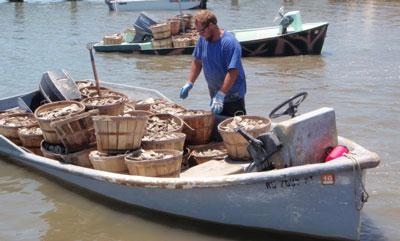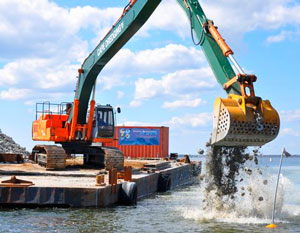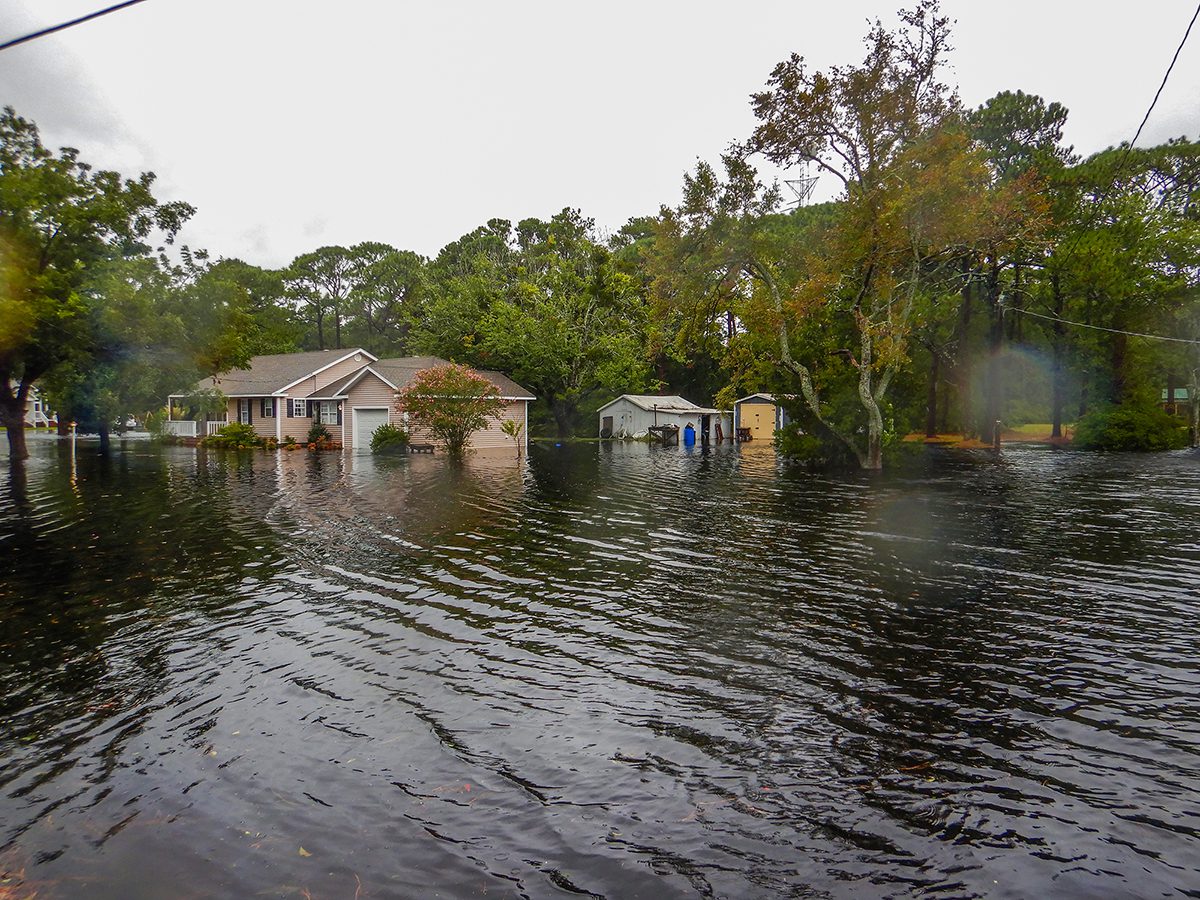 A commercial fishermen loads oysters shells to be placed in Stump Sound. Fisherman were paid to help build oysters reef as part of the federation’s federal economic stimulus grant. |
A landmark report on conserving our coastal habitats gives all of us concerned with preserving coasts and estuaries a new argument, one that will appeal to new and larger audiences: It’s good for the economy.
“Jobs & Dollars: Big Returns from Coastal Habitat Restoration” tackles the need to protect and restore our coasts from a perspective some have dubbed “coastal capitalism.”
Sponsor Spotlight
The report shows that public and private investments in coastal habitat restoration not only produce jobs in this cash-and-job-starved economy, but do it at a higher rate than many more touted job sectors, including oil and gas, road infrastructure and green building projects.
The report was prepared by Restore America’s Estuaries, an alliance of 11 conservation organization that formed in 1995 to preserve our nation’s estuaries. The N.C. Coastal Federation is a member.
Some of the report’s key findings
- Coastal habitat restoration—that includes things like wetland reconstruction and improvement; rebuilding depleted oyster beds; removal of dams, culverts, and other obstacles to fish passage; tree planting and floodplain reconstruction; and invasive species removal—typically create between 20 and 32 jobs for every $1 million invested. Compare that with road infrastructure projects that, on average, create seven jobs per million, oil and gas at just five per million, and green building retrofits that produce 17 jobs per $1 million invested.
- Habitat restoration creates local jobs and brings dollars to local businesses. In one of the report’s case studies, a watershed restoration project in Oregon, 80 percent of the money invested in the project stayed in the county, and 90 percent stayed in the state.
- Restoration not only creates direct jobs—people hired to use their skills and equipment to restore damaged wetlands and similar projects—but also stimulates indirect jobs in industries that supply project materials like lumber, concrete and plant materials, and induced jobs in businesses that provide local goods and services—food, clothing, shelter—to restoration workers.
- Most importantly, are the long-term economic returns from habitat restoration: tourism and tourist dollars, hunting and fishing revenues, freshwater supplies and, in an economy where house prices have plummeted, increased property values.
In 2009, the federation was one of 55 groups nationwide that received an economic stimulus grant administered by the National Oceanic and Atmospheric Administration. The $5 million grant was used to restore nearly 60 acres of oyster reefs in the Pamlico-Albemarle Sounds region. That $5 million was put to good use: It helped create or protect 150 jobs along the N.C. coast.
Darren Burrus, one of the project contractors and a Buxton resident, had less work for his company in 2009 when the project started. Thanks to the federation’s grant, things started looking up for his small business, Cape Dredging Inc., built oyster reefs off Hatteras Village.
Sponsor Spotlight
“We’re excited to get back to work, the marine construction business has been slow,” Burrus, a co-owner of the company, said in 2009. “And having more oysters and fish around will be good for the watermen and oystermen. I love North Carolina oysters.”
 A barge dumps oyster shells into Pamlico Sound as part of the federation’s stimulus grant. |
Another component of the project paid fishermen to plant 40,000 bushels of oyster shell in 19 locations from Ocracoke to Myrtle Grove Sound and Topsail Sound. This program, which the N.C. Division of Marine Fisheries began in the spring of 2009, provided supplemental income for many fishermen hit hard by the economic downturn.
“The project provides immediate job benefits and enhances ongoing efforts to improve oyster and fish populations, as well as improve water quality,” Louis Daniel, the division’s director, said in 2009.
All of which begs the question: How valuable are our coasts and estuaries to the nation as a whole?
While coastal-estuarine counties make up only 13 percent of the U.S. land area, they generate half the nation’s GDP, and provide 40 percent of all American employment. More than three-quarters of all commercial fishing depends on estuaries, generating an estimated $1.4 billion for local fishing concerns. U.S. coastal wetlands provide spawning grounds, nurseries, shelter and food for 85 percent of waterfowl and other migratory birds. Tourism and recreational pursuits—angling, bird watching, canoeing-kayaking and similar activities—add more than $70 billion to the economy every year.
But despite their obvious value, both ecologically and economically, America’s coasts and estuaries are in trouble.
Historic losses alone are staggering. The report documents that 97 percent of Columbia River salmon are gone. Likewise, 95 percent of all San Francisco Bay wetlands have vanished, sacrificed to development and commerce. The Chesapeake Bay oyster population is down to one percent of historic levels.
Louisiana’s wetlands are in a class by themselves. The state’s coastal wetlands are receding at an astounding rate of one football field an hour. Loss of the state’s wetlands not only threatens lucrative local industries like shrimping and crabbing, but also puts 45 percent of the nation’s oil and gas refining capacity and 43 percent of its strategic petroleum reserves at risk.
Locally, it’s no secret that the loss of North Carolina’s coastal wetlands from erosion, rising sea levels and increasing storm intensities pose a threat to economic interests on the Outer Banks. No less important, though, is the threat these new realities pose to the nearby inland areas and communities that depend on healthy coastal and estuarine ecosystems. Flooded coastal marshes; salinization of aquifers and drinking water; impacts to fisheries and wildlife; and property loss and devaluation due to flooding may be consequences of ongoing threats and loss of North Carolina’s coastal resources.
The report’s key recommendation
It is critical that the United States invest in coastal habitat restoration. Not only will it address many of the problems listed above, it can and will provide much-needed jobs—everything from out-of-work commercial fishermen, marina and boat captains, barge operators, and seaside businesses ranging from bait shops to four-star hotels and restaurants—in an economy still hurting from the 2008 crash and recession.







